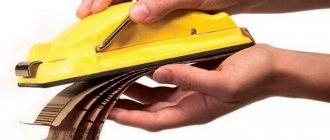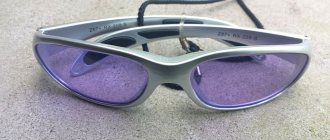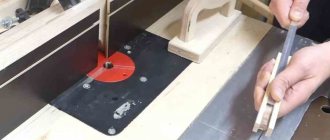From early childhood, people never cease to be amazed at the amazing abilities of magnets - to attract various metal objects to themselves. Permanent magnets (PM) are the most common type of this phenomenon. They are distinguished by the strength of the magnetic field. There are especially powerful magnets made from alloys of various metals.
Types of magnets
Accessories for search magnets
Thanks to proper use, transportation and storage, the search magnet will last a long time and will not lose its properties ahead of schedule. Accessories protect the unit from environmental influences and ensure efficient use and transportation.
Ropes for search magnets
Chinese cord and clothesline are the first step to failure. They only look very strong, but in practice they will break during the first dive. An “accident” will happen even if the object is too heavy or simply caught on a snag.
In order not to lose the magnet on your first “fishing”, you need to use a very strong rope
When choosing, it is important to consider its characteristics. For example, if the search involves a magnet capable of pulling out an object weighing 400 kg, then the breaking capacity of the cord should be no less
Particular attention should be paid to the diameter, it should be at least 0.4-0.5 cm. But the length depends on the scale of the search; rope of 10-15 meters is in great demand
Ways to bind a search magnet
The main secret of success is proper lacing. Initially, you need to tie the magnet with a constrictor knot, use a surgical one a little higher, and secure it all with an academic one. Pull and cauterize the end. Tie the cord on your hand so you don’t miss it when casting.
Practical use
But what is a search magnet without interesting finds? Due to its specific properties, it can be used where conventional metal detectors fail - in an aquatic environment. With proper skill, you can thoroughly explore a large area of the river bottom in a day. Considering the vast historical past of almost every region of the country, there is sure to be a unique specimen from past centuries.
But you shouldn’t console yourself with the thought of getting rich soon - the finds found with a search magnet are varied and are not always of value. You literally have to shovel the mouth of the river to find anything worthy of attention. Therefore, before starting a mini-expedition, it is recommended to familiarize yourself with the history of the region in order to increase the likelihood of a successful “catch”.
Neodymium magnets in the house
So, where can you get a neodymium magnet at home? Many people don’t even realize that there are many places around us where you can find products made from this rare alloy. There are several places and devices where such magnets are most often used.
Hard disks. Hard drives can be identified as the first place among all devices where you can find such a magnet. Moreover, such a data storage device can be found in any home. Of course, no one will disassemble a work computer or laptop in order to remove a magnet from it. In addition, a hard drive is a high-tech device that is quite difficult to open and disassemble. It is also worth noting that hard drives contain quite powerful magnets, which are not inferior in strength to those that can be bought in a specialized store. Another important point is that modern hard drives have much weaker magnets due to new standards and manufacturing technologies, so it’s better to look for an old drive.
Furniture latches. No one would probably have guessed that you could look for a powerful magnet in ordinary furniture latches that hold the door closed. But a neodymium magnet is very often located inside the latch. This is due to the fact that the surface area of the latch is relatively small, so ordinary magnets will not give the desired effect. Also, the latches themselves quite often break and after that you can disassemble them and remove the magnets, or from old furniture, which is often simply taken to a landfill. But it is worth noting that the power of such magnets is low, so they are not suitable for all purposes.
Engines and generators. Quite often, powerful neodymium magnets can be found in modern electric motors. The power and size of the magnets in the motors are quite large. An important nuance is that the engine or generator itself should not be very old. Because the production of neodymium magnets began relatively recently. Therefore, they most likely will not be found in old Soviet engines.
Method one
This method is considered the simplest. It is enough to hold a magnetized object several times in one direction against a permanent strong magnet. That's all. However, it should be taken into account that magnets made using this method do not hold a magnetic field for long and very quickly lose their properties. Such products are suitable only for simple manipulations. For example, such a magnet can help remove a needle that has fallen out of a crack or tighten bolts, but nothing more. Therefore, this method should not be seriously considered.
How to choose a search magnet
Search magnets differ in design, use cases, weight, power and size. Such diversity takes a beginner by surprise. Techniques and life hacks for successful “magnetic fishing” will help you choose a search magnet.
Single sided or double sided
There are two main types of search magnets used in different directions
The choice depends on the conditions of use, so before you buy a single-sided or double-sided unit, it is important to compare their advantages and disadvantages:
| Characteristic | Single sided magnet | Double sided magnet |
| Grip on object | The find is magnetized at the end, so even when working on a rocky bottom, the likelihood of unhooking is low. | Thanks to two working surfaces, it easily attracts an object, but is more likely to be lost when colliding with an obstacle. |
| Terms of Use | The unit is perfect for “vertical fishing”. It is more convenient to search while in a boat or on a bridge. The magnet enters perpendicularly into the water without turning over. | A universal magnet with a double surface that can be used in any environment. It will attract objects, even upside down. |
| Weight | The lightweight device is great for long searches. | A double-sided magnet is a third heavier than a single-sided one, which leads to rapid fatigue of the search engine. |
| Design | It has one eye-bolt fastening and a single working surface. | Equipped with two surfaces and fastenings. |
What weight of search magnet to choose
The average weight of search magnets is 0.2-4 kg. In your arsenal you need to have a unit with a force of attraction of at least 100-200 kg. By purchasing such a device, a search engine will be able to lift a flat metal plate with a smooth and clean surface or small objects from the bottom. In real conditions, fouling with silt, algae, and current weakens the effect of the magnet. As a result, it turns out that having an attractive force of 100 kg, the structure will overpower an object weighing no more than 7-10 kg.
Based on reviews from owners, it is better to choose a magnet with more powerful characteristics - 200-400 kg. They will magnetize interesting things, bypassing priceless pieces of hardware.
You can also buy a magnet for searching in water to make money, but in this case you will need a power in the range of 600-800 kg. Despite their modest weight, they are able to overcome mountains of metal. With their help you can find bicycles, motorcycles and remains of cars.
Table of sizes and main characteristics of search magnets
| Model | D (mm) | H (mm) | M (mm) | Weight (kg) | Force (kg/s) |
| F150 | 68 | 14 | 8 | 0,4 | 190-210 |
| F200 | 75 | 16 | 8 | 0,5 | 230-250 |
| F250 | 86 | 21 | 10 | 0,9 | 320-340 |
| F300 | 97 | 22 | 10 | 1,3 | 430-450 |
| F400 | 107 | 22 | 10 | 1,5 | 530-560 |
| F600 | 130 | 24 | 12 | 2,6 | 690-720 |
| F800 | 132 | 28 | 12 | 3,1 | 820-850 |
| F150x2 | 67 | 24 | 8 | 0,7 | 190-220 |
| F200x2 | 75 | 28 | 8 | 0,9 | 250-280 |
| F250x2 | 86 | 33 | 10 | 1,4 | 330-360 |
| F300x2 | 97 | 35 | 10 | 1,9 | 430-450 |
| F400x2 | 107 | 35 | 10 | 2,2 | 540-570 |
| F600x2 | 130 | 39 | 12 | 4,0 | 690-720 |
Objective rating of search magnets
At the moment, the absolute market leaders are:
- Forceberg F-200. A model that rightfully tops the list of the best search magnets due to its characteristics. Despite its modest dimensions, it provides traction of 220 kg. And two eye bolts are used to separate the magnet from the find and make searching easier. Wear less than 1% in 10 years.
- Redmag F-200. The modification is famous for its compliance with the specified power declared by the manufacturer. The maximum tensile strength of the presented model is 200-225 kg. An improved design made of metal and neodymium, with the addition of iron and boron impurities, strengthens the assembly several times, giving it additional strength. Used to extract scrap metal from water, soil and even construction waste
- F-300 superpower. The model is designed to search for steel objects and scrap metal. In calm conditions (in the absence of current), the unit is capable of pulling about 200 kg, in other cases the figure decreases several times. The device weighs 1.9 kg. This modification is perfect for beginner search engines.
- Nepra F-200. Improved unit with additional corrosion protection. Nickel plating and galvanizing of the cup extend the life of the magnet, protecting it from rust. The maximum adhesion force is 200 kg, it is achieved only in ideal conditions, and decreases when immersed in a body of water. Among the disadvantages, in comparison with competitors, we can highlight the rate of loss of attractive forces - over 2% over 10 years.
You need to select and buy a magnet based on the specific application. For beginner searchers, a basic lightweight model with a small force of attraction is suitable
More experienced fishermen should pay attention to the updated modification for retrieving large finds.
Master class 5. Magnets from clothespins
Let's reveal a little life hack - magnets made from clothespins can not only store lists and bills, but also clamp bags of food as shown in the photo below. It turns out to be very convenient - I took the clothespin off the refrigerator and immediately fixed the opened bag with it.
Wooden clothespins can also hold a piece of paper on the refrigerator door and at the same time clamp something between the teeth.
Clothespins can be painted, decorated with glitter, covered with colored tape or appliques, or decorated using decoupage technique, following the following simple instructions.
Materials and tools:
- Wooden or bamboo clothespins (you can take regular or decorative ones for scrapbooking);
- Scissors;
- Double-layer napkin with a pattern;
- One glue brush and one varnish brush;
- PVA glue;
- Glue "Moment" or its equivalent;
- Matte acrylic varnish;
- Small magnets.
Instructions:
- Separate the patterned layer from the napkin, then cut out a strip of it slightly larger than the end of a clothespin.
- Glue the cut strip onto one end of the clothespin using PVA glue, then use a brush to carefully spread the glue over the napkin. Leave the craft to dry.
- Trim the excess napkin with scissors.
- Coat the clothespin with varnish and wait about 2 hours for it to dry.
- Glue a magnet to the other end of the clothespin. Voila! The craft is ready!
What can you catch?
Fragments of historical monuments - knives, weapons from the times of the Great Patriotic War - are often recovered from the bottom of lakes and rivers. A magnet with good attractive force will pull out hidden treasures in wells and garbage pits. Cossack sabers were repeatedly raised from the Dnieper. All products containing iron and ferromagnetic metals will be attracted to the magnet.
Pure gold is not magnetized, but such jewelry also contains a ligature (a mixture to impart strength). For example, products of 585 standard contain 41.5% other metals, including nickel, which is highly attractive.
You can also find silver, but not all its varieties can be raised. Sets of past centuries, with the addition of ligature, are often mined from the depths of centuries-old lakes.
Stainless steel is magnetic to varying degrees, depending on the alloys added. Aluminum, brass, bronze, tin, lead and copper will not be attracted.
Often in your finds you can find metal sealed cylinders worn by German soldiers. They kept their valuables in them.
Places to find relics
Ideal search places are military crossings and centuries-old bridges. Valuable finds can be discovered when examining mill whirlpools and pre-revolutionary wells. The drains, cesspools and station toilets surprise you with their artifacts.
Search for valuable coins
Only cheap royal change will not be attracted to the magnet, but medium-denomination coins made with an admixture of nickel and chromium will delight their treasure hunter. You shouldn't count on expensive coins, because... They were made of gold and silver, which means they are very weakly magnetized.
About neodymium magnets
Compound
Neodymium is a rare earth metal with powerful magnetism endowed by nature. In the periodic table, the chemical element occupies position 60. It is not found in nature in its pure form. It is isolated from a substance such as didymium, where it is found in a mixed state with other lanthanides.
Despite being a “rare earth”, the element is quite common in the earth’s crust. The main metal production is concentrated in China.
In answer to the question of what a neodymium magnet is, it follows that it is an alloy of neodymium and iron with the addition of boron. In order to obtain such an alloy, the outgoing components are reduced to a powder state. After mixing, the composition is baked in a special oven, placing the mixture in molding containers in advance.
Peculiarities
The rare earth metal Nd cannot be used in its pure form due to its poor corrosion resistance and softness. To reduce these disadvantages, magnets began to be made from the above-mentioned alloy. It was possible to obtain a powerful magnet that is not susceptible to corrosion processes and can withstand high temperature conditions (up to 1400C).
Application
Neodymium magnets have found wide application in engine building for the aviation industry. In some medical devices, NMs play an important role as the main functional parts. In everyday life, these are various magnets that are attached to refrigerators. They are also used to make various puzzle toys.
NM makes excellent knife holders for kitchen walls. Disc-shaped magnets are used to hold furniture doors closed. Home craftsmen invent various household gadgets, demonstrating what can be made from a neodymium magnet.
In industrial production, neodymium magnetic products are used in various filtration systems to capture the smallest metal particles. Using NM, production areas are cleared of metal shavings. Cereal seeds are treated with magnets to increase yield.
A plug with a neodymium magnet is installed in the car engine crankcase, which removes metal chips from the engine oil.
Is it possible to make it yourself?
NMs are quite expensive. Many homemade DIY enthusiasts are trying to learn how to make a powerful magnet from neodymium alloy themselves. In fact, the production of NM is a complex technological process that cannot be reproduced in everyday conditions.
The fact is that neodymium magnets can only be made using powder metallurgy. The production of NMs involves sintering neodymium, iron and boron powders. The complex process involves special technological equipment. Therefore, the only way to acquire powerful neodymium magnets is to use disassembly of discarded electronics or other devices.
Additional Information. It is strictly forbidden to drill or crush neodymium magnets. If their integrity is damaged, magnets lose their properties. The same thing happens if magnetic surfaces are damaged.
The amazing properties of magnets have always attracted the inquisitive minds of people. The use of magnetic field sources has brought world civilization many valuable inventions in almost all spheres of human activity.
Types of magnets
What types of magnets are there? They can be of three types:
- Constant M are of natural origin. They are made from alloys of several magnetic materials.
- Temporary M exhibit their properties under the influence of an external magnetic field.
- Electromagnets consist of a coil of insulated wire on a live core.
Permanent magnets are divided into several types based on their composition:
- ferrites;
- neodymium PM;
- samarium-cobalt alloys;
- alnico;
- magnetoplasts.
Ferrites
Ceramic PM, or ferrites, are the most common type of permanent magnets. They appeared in the 60s of the last century as a result of the successful development of a new magnetic alloy. Ferrite PM retains a high level of magnetization for a long time. However, the strength of their magnetism is highly dependent on changes in ambient temperature.
For convenient use, ferrite products are produced in different shapes and sizes. Magnets are made in the form of cylinders, rings, rectangular bars and disks. Recently, ferrite magnets with eye bolts have appeared for conducting search work in both granular and aqueous environments.
Ferrite
Neodymium PM
Neodymium magnets are very strong magnets, made from an alloy of neodymium, iron and boron. The source of a constant magnetic field is a crystal structure of interconnected atoms in accordance with the formula Nd2Fe14B. PM is used in various industries, medicine, electrical engineering, electronics and everyday life.
Neodymium M
Samarium-cobalt alloys
The alloy contains a rare earth chemical element – samarium. The metal has strong magnetic properties. Samarium-cobalt magnets (SCM) are highly resistant to corrosion and temperature changes and do not require a special protective coating.
Rich samarium deposits are located in China. Mass production of SCM has been established in this country. Under certain conditions, samarium products are stronger than the most powerful neodymium magnets. SCMs are made in two types, corresponding to the chemical formulas: SmCo5, Sm2Co17.
SCM
Important! SCMs are used in almost all industries. Magnets are the basis for creating critical parts of electric motors, generators, and various electrical devices. SCMs play an important role in speaker systems, PC hard drives, etc.
Alnico
PM got its name from the abbreviation of the names of the alloy components. These are aluminum, nickel and cobalt (Alnico). It also contains iron. In addition to the fact that the alloys have a high value of residual magnetic induction (Br), they are endowed with high anti-corrosion resistance, and also retain their magnetic qualities at high temperatures (up to 5500C). The advantage of PM Alnico is that they are much cheaper than SCM.
An example of Alnico is horseshoe-shaped products. This form of the PM ensures that the poles are as close to each other as possible, which makes it possible to lift heavy metal objects.
Alnico rings
One of the properties of alnico products is that they can be easily demagnetized, while at the same time the material quickly restores residual magnetization in an external magnetic field. This phenomenon is explained by the low coercive force.
Magnetic plastics
With the development of various industrial technologies, there was a need for PM, which would be in the form of flat flexible materials. The problem was solved by spraying metal onto polymer sheet material. For this, polymers such as vinyl, polystyrene, polyamide, etc. are used. Polymer magnets are both flexible and rigid.
Flexible magnetoplast
One of the striking examples of the use of these products is the sealing frame of the inner perimeter of the refrigerator door. A magnetic plastic is placed inside the rubber frame, which tightly attracts the door to the metal surface of the refrigeration unit body.
The positive qualities of magnetoplasts include the following:
- creation of multi-pole structures;
- long service life;
- sustainable reproduction and stability of the magnetic field;
- anti-corrosion qualities;
- strength and ductility.
Electromagnet and demagnetizer
An electromagnet is a device that creates a magnetic field around a core with a wound wire. Current passes through the turns. The ferrite rod at this time becomes a powerful magnet.
The action of powerful electromagnets can be observed in steelmaking shops for processing scrap metal. An overhead crane lowers a magnet into a crowbar. The crane operator turns on the voltage, and several hundred kilograms of metal stick to the electromagnetic disk, which is then sent to the melting furnace after turning off the current.
The demagnetizer acts in the reverse order - it removes residual magnetization from parts of various devices. It is used where induced magnetic fields interfere with the operation of electrical engineering and electronics.
Note! In its design, a demagnetizer is no different from an electromagnet. The difference is that not constant, but alternating voltage is supplied to the winding coil.
Neodymium magnets: what is this material?
According to scientists, this development took about 20 years of research and testing. When choosing materials, many factors were taken into account: availability, manufacturability, safety, high magnetic properties, resistance to environmental conditions. Scientists considered the use of rare earth metals to be a promising direction. And neodymium was just perfect for these purposes.
Magnets based on it have amazing adhesive strength. Even a small volume of material can support many times its own weight. Magnetic properties last a long time (lose no more than 2% over 10 years of use). Nowadays neodymium magnets can be purchased in specialized stores. Their prices are affordable to almost anyone.
Magnets on sale
In fact, magnets can be found in the most unpredictable places. These could be knife holders in the kitchen, wall clocks, various figurines, jewelry, and decorative items. In general, any objects that have magnetic properties can contain neodymium. The question is whether a magnet found at home in a household appliance or hard drive is suitable in terms of power and size... Also, industrial magnets are made with a thread or hole of the required shape and diameter. If a neodymium magnet is needed for business, then it is better to think about buying a real large magnet.
Electrical engineering
| REPLACING THE PHILIPS VACUUM CLEANER MOTOR |
Loudspeakers
You can also get magnetic components from so-called “columns”. However, if you google “neodymium magnets - where to get them in everyday life”, you will not find many instructions on how to disassemble such equipment. There are two main reasons here. Firstly, the speakers of acoustic systems rarely break, and if they do, they can often be repaired. Secondly, they often contain ferrite rings, while neodymium alloys are used only by some manufacturers in modern, and usually expensive, loudspeakers.
Above we described only some options on the topic “where to get neodymium magnets in everyday life,” videos and other articles on our website, we hope, will help you in finding magnetic products.
Is it possible to create a neodymium magnet yourself?
Many have wondered about creating such a magnet at home, but, unfortunately, it will not be possible to create such a device at home. The most advanced technologies, equipment and tools are used to produce such magnets. Therefore, it will definitely not be possible to create such a device without special tools. The magnet itself is made in an interesting way, the material for manufacturing is crushed, then sintered in special furnaces and then it is given the power of a magnet. Therefore, it will not be possible to repeat this at home. But many people don’t even realize that neodymium magnets are found in household devices and various appliances, and after the device fails, the magnet can be removed and used for various purposes.
We make refrigerator magnets (and not only) from improvised, waste and natural materials
Fridge magnets are pleasing to the eye and keep our lists, photos, postcards, business cards and coupons visible. Making them with your own hands for yourself or as a gift is very interesting and easy. After all, if you think about it, to make magnetic crafts you can use almost everything that is at hand, just use your imagination, stock up on glue and mini-magnets. In this article, we presented 70 inspiring photo ideas, as well as 5 step-by-step lessons on how to make cool refrigerator magnets (and more) from scrap, natural, and even waste materials.
Application
Traditionally, they are used in electronic devices and devices where it is necessary to create a constant magnetic field. The properties of the material make it possible to successfully use them when searching for and lifting metal objects from the bottom of reservoirs. Such structures, in addition to the eye for fastening the cable, are equipped with an eye bolt, which is simply necessary, since when screwed in, it allows you to separate two strongly adhered surfaces.
Magnets are available in sizes from 1 to 120 mm in diameter and in different thicknesses and shapes. The thinnest of them are widely used in the leather goods and furniture industries. They can be found in funny toys and devices for hanging various utensils. Powerful magnets are indispensable for filtering bulk and liquid materials. They are used to catch metal impurities and foreign objects in the conveyor flow.
The high adhesive force encourages people to use them to achieve “savings” when using water and gas. By purchasing neodymium magnets for counters, they thus try to stop or slow down the rotation of their mechanism. This possibility theoretically exists in devices where steel elements are used internally. A powerful magnet placed in a specific location on the housing can slow down the rotation of the impeller.
What you need to make a search magnet
To make a search magnet we cannot do without:
- Welding machine. You will need any welding machine or inverter for domestic needs;
- Bulgarians. There should be a circle for cutting metals on it;
- Hammer. It's best if it's a sledgehammer;
- Some other tools to bend and fasten.
The materials you will need are a pipe and a metal rod, epoxy glue, and, of course, a neodymium magnet. The beauty of neodymium magnets is that they have a very high adhesive force, such that it is very, very difficult to separate a magnet that has stuck to a metal surface.
We recommend using N42 neodymium magnet. However, you can use any other neodymium magnets if they are available. The higher the adhesion force of the magnet to the metal, the better, and you will be able to get more treasure from the bottom. The best option for these purposes is considered to be a magnet with a pull-out power of more than 200 kg.
Master Class. 1. Hook magnets made from branches
You can hang keys, towels, ladles and other things on these branch hooks.
Materials and tools:
- A dry small but strong branch with a branch;
- Hand saw or jigsaw;
- Small neodymium magnets;
- Glue;
- Drill and drill bit equal to the diameter of the magnets;
- Acrylic paint (optional).
Instructions:
- Using a saw, cut the branch so that it looks like a hook. Then cut the branch lengthwise so that the back side is flat as shown in the photo below on the left.
- In this flat back of the branch, drill a recessed hole the size of your magnet.
- Glue the magnet into the resulting cell.
- If desired, paint the craft and cover it with matte varnish. Ready!
Is it possible to make neodymium magnets with your own hands?
Industrial technology, in addition to sintering the mass into an alloy, also involves a complex process of magnetization of the resulting substance, which is inaccessible for home conditions. Very powerful force fields are used for this. If you have a great desire to obtain neodymium magnets yourself, you can do this yourself by disassembling “obsolete” electronics.
In some old hard drives you can find one or two small elements inside. It is not advisable to try to drill or crush such magnets. The surface protective layer is damaged, the material reacts with the environment and loses its properties. In addition, as experts say, the shavings are highly flammable and can ignite surrounding surfaces.
Engines and generators
The most popular device that can be used to extract neodymium is a stepper motor. It can be found inside any office equipment that has broken down.
Usually in motors the magnet is located among the rotor elements. The magnetic ring is placed on a rod and sandwiched between plastic wheels. To remove the part, a vice and a screwdriver are suitable, which you need to carefully knock out the axle.
It is important to remember that the alloy is brittle and breaks easily. That is why during operation it is necessary to firmly clamp only one upper gear. If the magnetic ring is secured with glue, you will need to heat the part with a hairdryer or lightly tap it with the back of a screwdriver.
Neodymium rings are not found in older model engines, which previously used a conventional ferromagnet. It is also quite powerful and can be used for a variety of purposes.
Compound
Magnets based on this rare earth metal are designated by the formula Nd2Fe14B. The composition includes neodymium (Nd), iron (Fe), boron (B). The peculiarity of the technology is that this rare earth metal is difficult to isolate in its pure form. The sintering process with the remaining components in powder form must take place in an inert environment. Otherwise, its rapid oxidation occurs with loss of properties.
The technology for normal conditions is complex, so trying to make neodymium magnets with your own hands is impractical. Products are marked during production. The number after the letter N (25, 30, 45) indicates the code. The higher the indicator, the stronger the magnetic properties of the material. The maximum operating temperature of the magnet also depends on the number.
Phases - which is better - three or one?
Many lovers of electrical equipment follow the path of least resistance and, in order not to bother, opt for a single-phase stator for a windmill. However, it has one unpleasant feature that neutralizes the ease of assembly - vibration when loaded, due to the variability of current output. After all, the amplitude of such a stator is abrupt, reaching a maximum when neodymium magnets are located above the coils, and then dropping to a minimum.
But when the generator is made using a three-phase system, there are no vibrations, and the power indicator of the windmill has a constant value. The reason for this difference is that the current, falling in one phase, at the same time increases in the other. As a result, a wind generator operating in a three-phase system can be up to 50% more efficient than the exact same one using a single-phase system. And most importantly, a loaded three-phase generator does not produce vibration, therefore, the mast does not give rise to complaints about the wind generator to the supervisory authorities from ill-wishers among neighbors, since it does not create an annoying hum.
Tags: amplitude, battery, beat, sconce, wind generator, windmill, view, harm, choice, generator, house, , protective, sign, like, computer, design, , magnet, magnetic, matrix, power, load, voltage, nominal , oscilloscope, polarity, constant, rule, principle, wire, start, , work, size, edge, row, garden, network, connection, term, ten, current, transformer, three-phase, , installation, shield, effect
Peculiarities
To prevent exposure to environmental conditions, the magnets are coated with a protective compound. Typically these are two layers of nickel or an improved version with an additional layer of copper in between. Another important feature is that neodymium magnets begin to demagnetize at temperatures above 70 °C. Exceeding the limit values can lead to a complete loss of properties and the alloy turning into just a piece of metal.
The specifics of the material require special safety measures during operation. Thus, neodymium magnets 50x30 mm have an adhesion force of 100 - 115 kg, and 70x50 mm up to 300 kg
If handled carelessly, they can cause harm: pinching fingers, injuring the skin, damaging bones. In the event of an uncontrolled collision of two magnets, the material may crumble with the formation of sharp fragments that can injure the eyes
Search Magnet Care
To use a search magnet for a long time, it is important to properly care for it. There are no special requirements for processing the coating, but you need to wipe it with a dry cloth and clean it of small adhering metal particles. . The magnet is a fairly reliable tool; its service life depends on the characteristics of use.
Over a decade, it loses no more than 1% of power.
The magnet is a fairly reliable tool; its service life depends on the characteristics of its use. Over a decade, it loses no more than 1% of power.
Do not hit or heat the device. When exposed to temperatures above 80 °C, it will lose its magnetic properties and turn into a useless piece of metal.
Important! The design negatively affects the operation of electronics; the damage radius depends on the power. When searching for artifacts, you should keep smartphones and laptops at a safe distance, and it is better to store search magnets in special bags (more details below).
Demagnetization of search magnets
Even the most powerful magnets lose their properties over time. Ferrite products will last for several decades, but neodymium products will last 200-300 years.
Causes of involuntary demagnetization:
- Heat. When heated above 80 ⁰C, the magnet will completely lose its attractive force. Only some models have increased resistance to temperature changes and can withstand up to 200 ⁰C.
- Strong blows. Mechanical impacts on a magnet (impact, falling from a height) deprive it of its value.
- Errors when cutting and drilling. Strong pressure when processing a magnet with a grinder can lead to loss of characteristics.
- Impact of external factors. When exposed to a magnetic field with an induction of about 3-4 Tesla, the magnet can be demagnetized.
It will be possible to restore the lost properties only in large-scale production using an industrial magnetization installation.
Methods for demagnetizing a magnet
Loss of the ability to attract metal objects can occur both naturally and during a number of actions. Subject to the rules of operation and storage, the qualities of neodymium elements are maintained for 100 years or more, and ferrite analogues continue to attract metal for 8-10 years. Degaussing neodymiums naturally is not practical if the procedure is to be performed on a new item.
Product heating
This method is used both in industrial and domestic conditions: if the magnet is made of a standard alloy of neodymium with boron and iron, it will lose its properties when placed in water boiling at 80 degrees Celsius or in case of contact with a surface heated to the specified temperature. If we are talking about a product with increased resistance to thermal shocks, it is unlikely that it will be possible to perform the procedure at home: the demagnetization temperature of neodymium magnets with such properties is 200 degrees Celsius. To carry out the procedure in such cases, special industrial equipment is used.
Mechanical Actions
Neodymium can lose its qualities as a result of a strong directed impact, for example, an impact: this material has a powder structure that is destroyed when dropped from a height or when exposed to impact equipment. In addition, demagnetization can occur accidentally during the process of drilling or cutting a magnet: this is due to excessive mechanical pressure or an increase in the temperature of the product without forced cooling.
Treatment with external magnetic influence
Most often, if it is possible to use industrial equipment of increased power, another magnet is used, which allows the formation of a field with an induction force of about 4 Tesla. A neodymium magnet is demagnetized in a matter of seconds, so this method, despite its technological complexity, is characterized by the fastest possible result.
How to make a search magnet with your own hands
First, let's take a piece of metal pipe that would fit the diameter of the neodymium magnet. Let's cut the pipe with a small margin, so that the magnet can easily fit into it. The pipe will act as a kind of clip for placing a neodymium magnet in it.
It is very important to process the edges of the pipe and make its surface as smooth as possible. Otherwise, a home-made search magnet may cling during search work, which will cause a lot of inconvenience.
To grind a piece of pipe under the holder, you need to use an angle grinder - an angle grinder.
After the clip is ready, take a piece of rod with a diameter of 10-12 mm and bend it into a semicircle. The idea is to make an “eye” out of it for attaching a rope or cable to a search magnet. After the rod is bent, it should be welded to the side of the metal holder from the pipe. How to use welding, read here mmasvarka.ru.
At the final stage, all that remains is to install the magnet in the holder, and then fill it around the edges with epoxy glue
For reliability, coat the inner walls of the pipe with epoxy, and carefully, being careful not to injure your hands, install the neodymium magnet into the pipe
After installation, if there is a small space left between the pipe and the magnet, you must get rid of the voids. For these purposes, you can use pieces of nails or thin metal, not forgetting to fill the whole thing with epoxy glue.
It is important that a search magnet assembled with your own hands will dry for at least three days. Therefore, you need to be patient, and only after the epoxy has completely dried can you go in search of the treasure
Good luck to you treasure hunters!
How to make vinyl magnets: step-by-step instructions
Magnets enliven the atmosphere, arouse the interest of guests and bring benefits. There are calendars and notepads on a magnet. They are made from vinyl, ferrite and neodymium. And if you need a flat product, the best option would be a refrigerator magnet in Moscow, made of flexible material with an adhesive base. It doesn't have strong adhesion, but it can be easily cut into any shape.
In this article we will tell you how to make vinyl magnets with your own hands and offer some interesting ideas.











